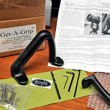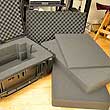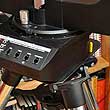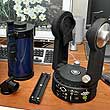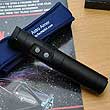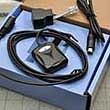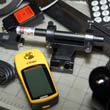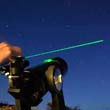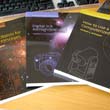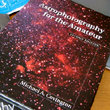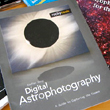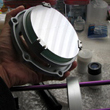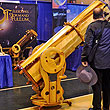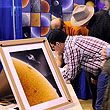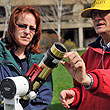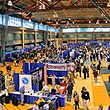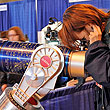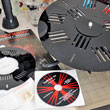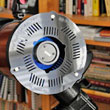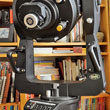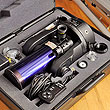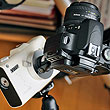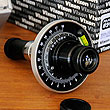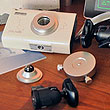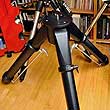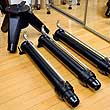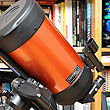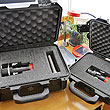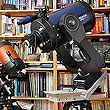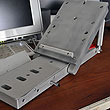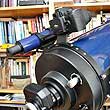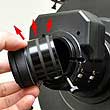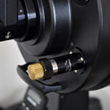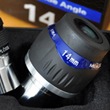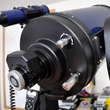Questar telescopes are known the world over for their quality instruments. We had a chance to see them first hand at the NEAF conference in 2011. While we were certainly impressed with the quality of the telescope's optics, we were also struck by their tripods that supported their scopes. We had never seen anything like them before. They were compact, very portable, and rock stable. Everything we would want in a telescope stand.
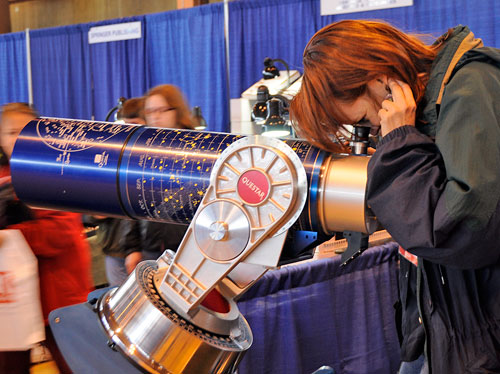
When we started putting together our portable deep-sky astro-imaging system, we looked for components which were easy to transport, quick to set up, and simple to use. Our current PDSI setup consists of the following:

The ASGT tripod, though, while extremely stable turned out to be less portable than we wanted. Also, we realized that with the fast f/2 Hyperstar lens, we didn't need to track. Recalling our positive impressions of the Questar Tristand, we began keeping our tabs on EBay, Astromart, and Craigslist for a used one. As a Tristand is made only when it is ordered, there aren't a lot of them around and they don't show up for sale too often (maybe a few times a year). We would estimate that only a few hundred of them have ever been made. A few weeks ago, we found exactly what we were searching for...a used Tristand in almost perfect condition. It even had the optional "leveling feet" already installed!

When we were doing background research on the Tristand, we could not find many detailed photos or reviews of the unit, at least not to the level which we would have liked. Today, we would like to correct that situation and provide a more complete look at this very remarkable telescope accessory.
The Questar Tristand is made of the following three pieces:
Almost all of the components of the Tristand were made with machined parts out of aluminum or stainless steel. The feel of the knobs, the fit of the pieces, and the quality of the finish were absolutely first rate. The Tristand exudes quality in every way. We were, however, a little surprised to find the accessories tray to be made out of some kind of plastic and not of aluminum. This is not to say that it is bad, just unexpected. There may be a functional reason for Questar's decision. If you know, feel free to drop us a note!

The Tristand head weighs about four pounds and is made mostly of machined aluminum. Knobs and levers are made with stainless steel. The telescope platform has the typical latitude range from 26º to 90º (note the brass teeth in the gear). There is also a knob for azimuth adjustment (left or right) of +/-30º from center. The platform even has
an integrated grab handle on the right side for easier transport of the head, even with a telescope mounted. The mounting screw has the standard 1/4-20 thread. This is convenient because cameras, spotting scopes, and other such items can be used with the Tristand as well.

The legs of the Tristand are different than that of other tripods. The Tristand legs do not extend. These cylindrical legs rotate back along the central post for transport, and forward for deployment. Note the pin for locking the leg into place in both the opened and closed positions. These pins ensure that the legs will never slip once locked.
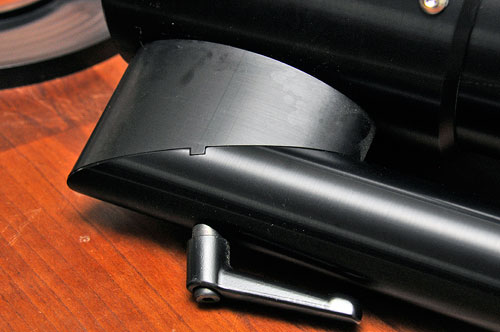
With the levers, the locked legs may be quickly loosen, rotated, and locked back into place. This is the simplest and quickest mechanism for setting up a rock-solid tripod that we have ever seen. The optional "leveling feet" allows for fine adjustments on uneven ground. While this is great for decks and driveways, we are not sure how well it will work on softer surfaces like a lawn or field.
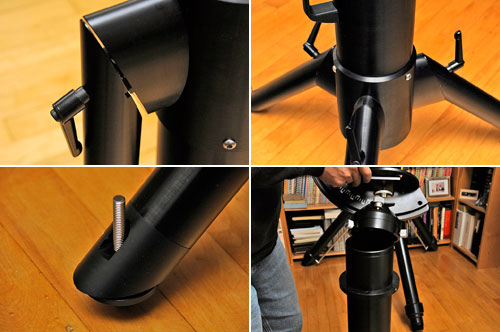
The Tristand head mates with the post with almost zero play. The head is secured via three stainless steel bolts. Once tightened, the entire unit felt as if it was carved from a solid block of aluminum. The complete package weighs in at around fifteen pounds. While we would not take the Tristand along on a backpacking trip, with the integrated handle, the Tristand could be easily carried from the car out into the field with ease.
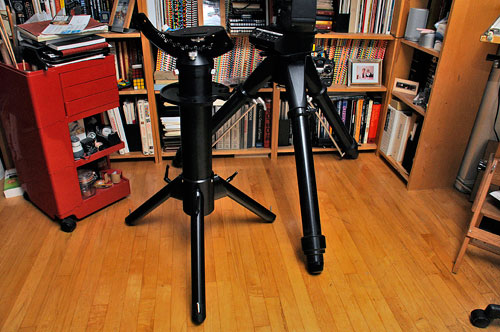
The Celestron C6 OTA has two standard 1/4-20 threaded holes in its mounting rail. Attaching the optical tube was a simple matter of mating up the screw and one of the holes. Lining things up was a little tricky as we had to do it by feel, but once attached, we could leave the OTA on the head until we wanted to swap something else on. So no big deal.

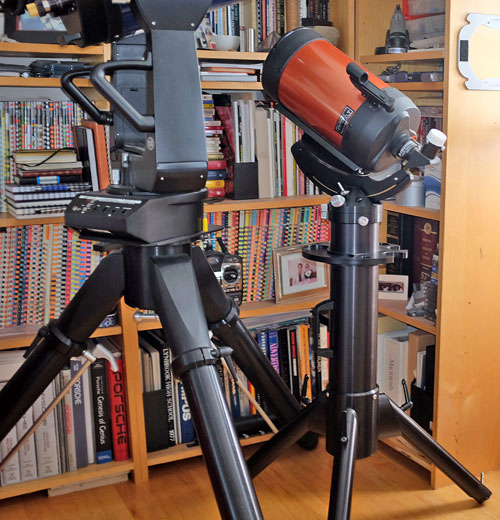
The impetus for getting the Tristand now is the coming of Comet ISON. It is hoped that Comet ISON will be so bright that it will be visible during the day. However, as the past have shown, comets have a way of fizzling out before getting to Earth. Remember Comet Kohoutek? Still, we are buying into the hype and getting prepared. With the new Tristand, we should be able to quickly set up whenever viewing conditions are favorable. Comet ISON, we are now ready for your closeup! [Permalink] - Questar Tristand FirstLook
|

